Readers in the Lehigh Valley saw some interesting news stories throughout the month of January as the one of the boilers from the Ueberroth Zinc Mine Historic District (1995RE50357) was removed from the former American Atelier furniture factory on Front Street in Allentown.
The 2.5-ton boiler, measuring 30 feet long, was relocated to this location in 1901 to be used as a water tank and the building built around it. This article in the Allentown Morning Call covered the story.
What is the Ueberroth Zinc Mine and its pump?
The mine was one of five operating in the Friedensville area in the mid-nineteenth century, mining zinc ore, refining it to produce brass, paints, and roofing materials. The open pit mine was commenced by the Pennsylvania and Lehigh Zinc Company, later known as the Lehigh Zinc Company, in 1853.
Deep pits and horizontal shafts were required to successfully mine zinc ore and so the success of the mine required a powerful dewatering system. In 1872, the largest, most powerful single cylinder steam engine ever built, named the President Pumping Engine, began dewatering the zinc mines in Friedensville, Upper Saucon Twp., Lehigh County. Lehigh Zinc Company’s Cornish born engineer, John West, designed the engine and the pumps which were manufactured in nearby Philadelphia.
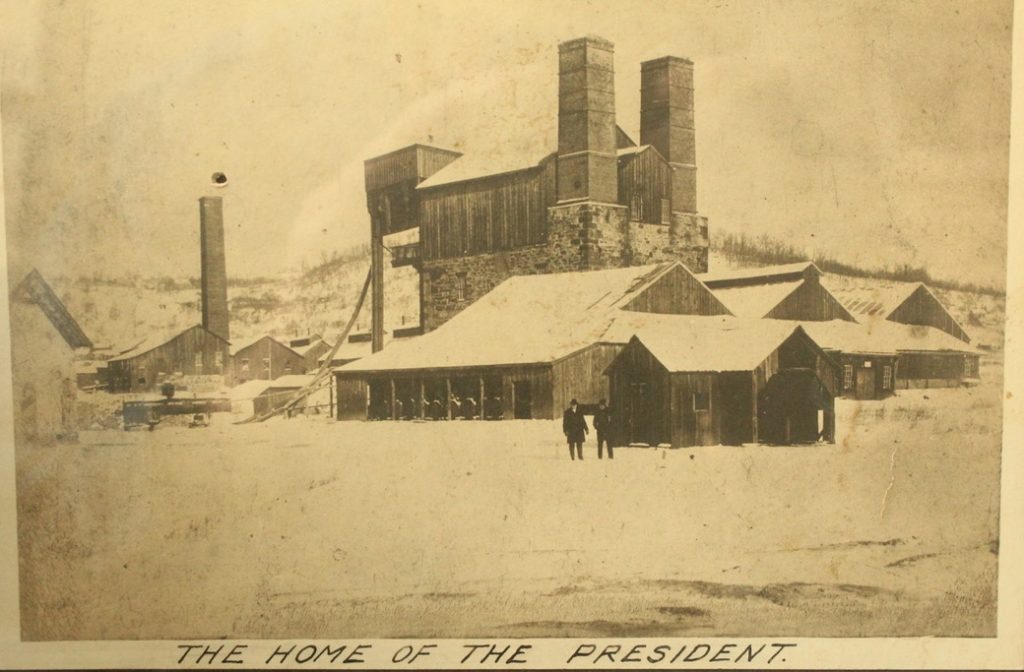
The pumping engine was the largest of its type to have been built in North America and possibly the largest in the world designed to pump at least 12,000 gallons of water per minute from a depth of 300 feet. The pumping engine ceased operation by 1891 due to economic conditions and high operating costs and the zinc mines were dormant by 1893. In 1900, the engine was sold for scrap and other parts were relocated by the new owner, New Jersey Zinc Company or were sold locally, including this recently rescued boiler.
The Ueberroth Zinc Mine was determined eligible for listing in the National Register for its association with Industrial Architecture and Engineering. The property is a rare surviving evidence of hard rock mining in the Lehigh Valley region. This zinc mining enterprise, including the ore mined at the site and then transported to Bethlehem for refining into a salable product, represents the first successful zinc manufacturing enterprise in the United States and certainly was the first modern scale industrial company in Bethlehem, predating the city’s well-known iron and steel industry.
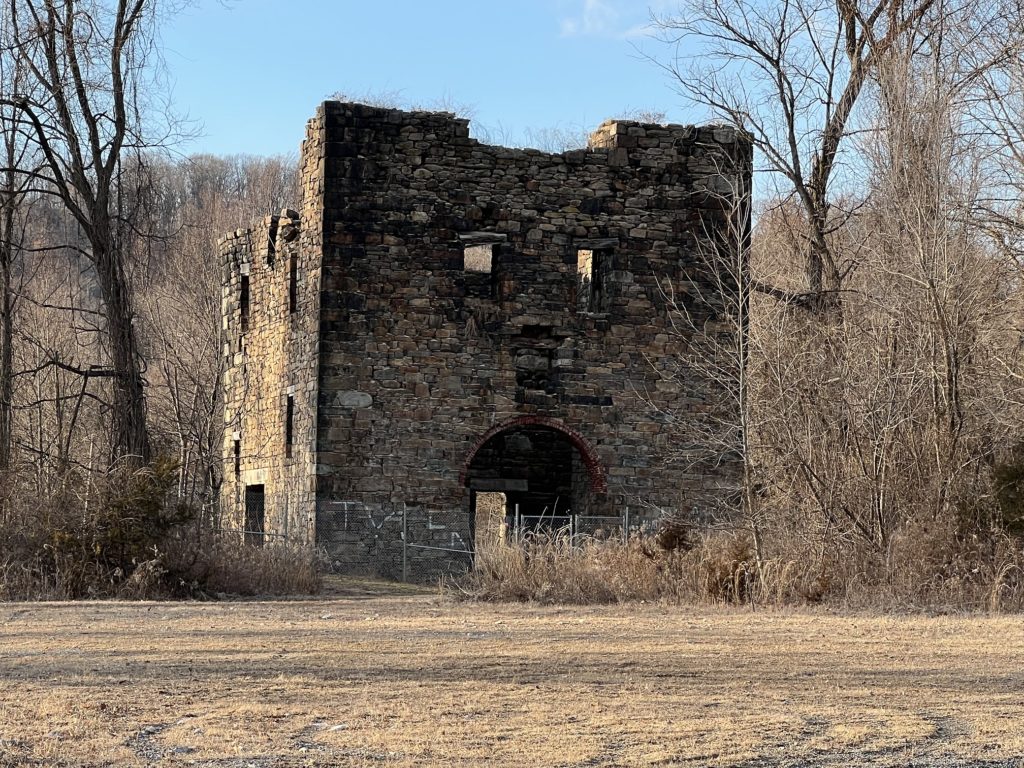
The surviving ruins also has a cultural and ethnic association as the only Cornish style pumping engine house structure in the United States as mine specialists, world renowned in steam and mining technology, were recruited for design and construction. Admittedly, reading the history of the operation really did transport me to my Sunday evenings watching Poldark on WITF!
Today, the site contains ruins, scenic overlooks, and historic features. The majority of the President Pump’s engine house stone structure remains, unchanged from its’ original purpose to support this massive engine. Lehigh University acquired the property in 2012 as part of a larger land donation. The University has developed academic uses to support their students’ research in various STEM program areas. Public access to the site is restricted but future plans are in development for a heritage park, interpreting the layered history of the property.
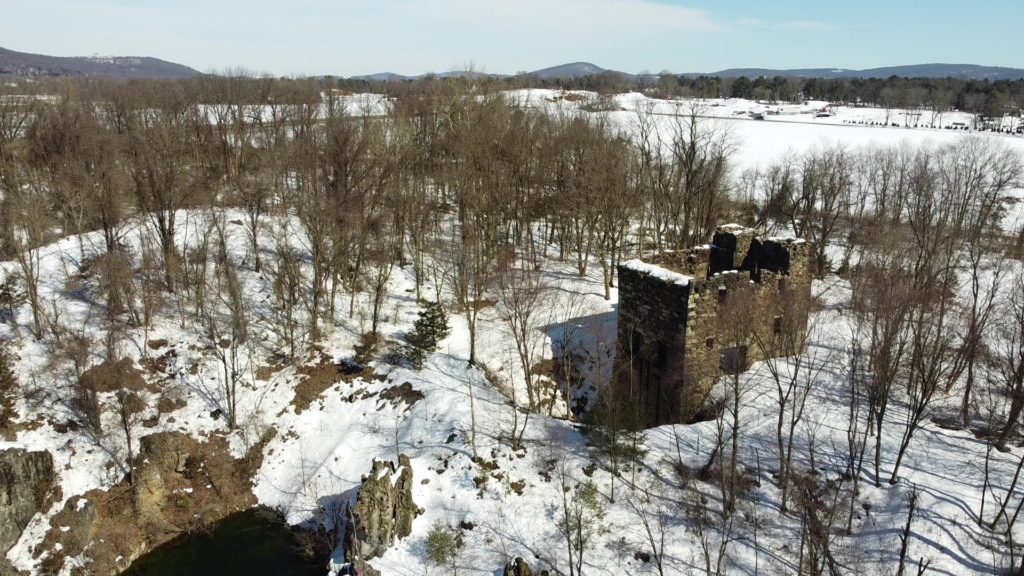
PHMC Partnership
PHMC was pleased to partner with Lehigh University as they explored the stewardship of the President Pumping Engine House. Two grants through the Keystone Historic Preservation Grant program in the planning category assisted with the preparation of a conditions assessment and construction documents.
Working with Whitman, Requardt & Associates and Keast & Hood Engineers, these projects developed recommendations to reset portions of the stone walls, replace failed and failing lintels, repointing the masonry and capping the walls to prevent moisture infiltration to stop further deterioration. Spillman Farmer Architects followed on this work to reimagine the engine house space and surrounding area as a public space.
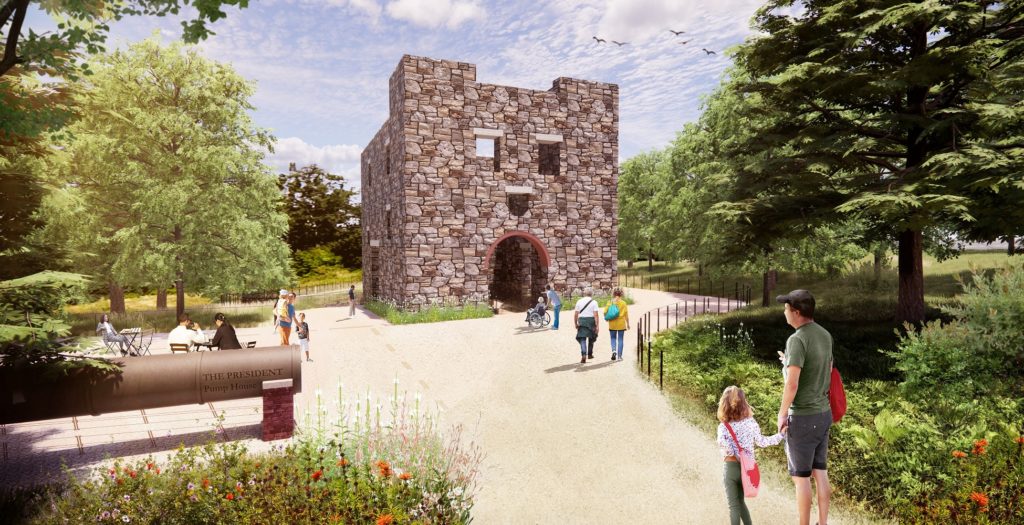
Additionally, PHMC approved an historical marker for the Presidential Pumping Engine in 2022. So, look for additional announcements regarding the marker dedication later this year.
Next Steps
The rescue effort took some four hours and now the boiler is safely stored at a Lehigh University site in Upper Saucon Township, Lehigh County waiting the next phase of the project’s development. The recovery of this boiler is a significant step in the project. Located about where the boilers stood when the engine was in operation, it will be a key display element in interpreting the site for visitors.
To Learn more about the project and rescue efforts, check out this blog from the National Canal Museum and from the National Museum of Industrial History or visit the Friedensville Mines Heritage website to learn more.
Keystone Grant Application Deadline Reminder
Don’t forget that the deadline for applications for the Keystone Grant program’s 2022-2023 cycle is Wednesday, March 1, 2023. Guidelines and application process can be found on the Grants section of the PHMC website.
Comment Policy
PHMC welcomes and encourages topic-related comments on this blog. PHMC reserves the right to remove comments that in PHMC’s discretion do not follow participation guidelines.
Commenters and Comments shall be related to the blog post topic and respectful of others who use this site.
Commenters and Comments shall not: use language that is offensive, inflammatory or provocative (this includes, but is not limited to, using profanity, obscene, or vulgar comments); disparage other commenters or people; condone illegal activity; identify the location of known or suspected archeological sites; post personal information in comments such as addresses, phone numbers, e-mail addresses or other contact details, which may relate to you or other individuals; impersonate or falsely claim to represent a person or an organization; make any commercial endorsement or promotion of any product, service or publication.
If you would like to comment on other topics not related to this blog post but related to PHMC, please fill out the PHMC Contact Us Form.
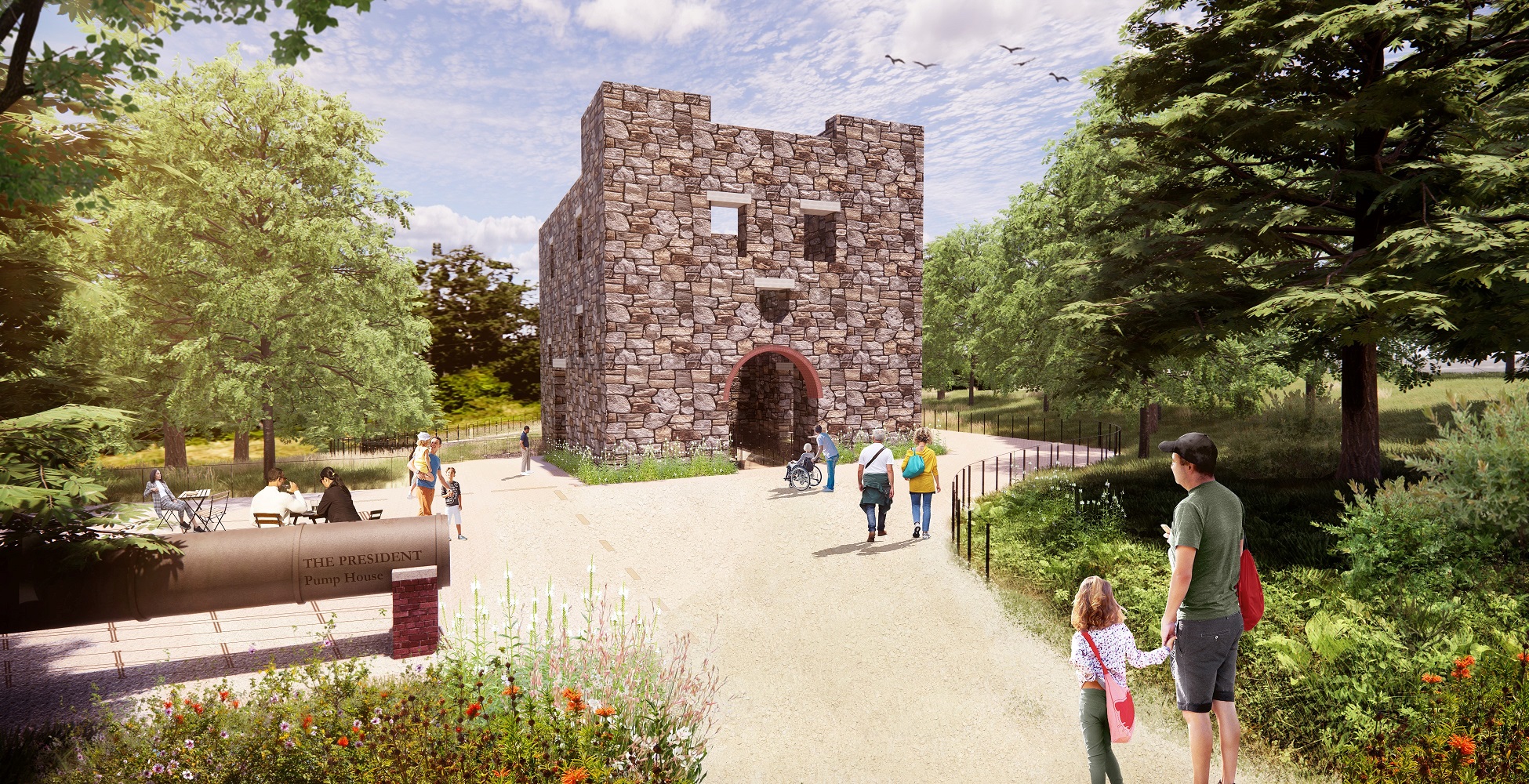
Leave a Reply